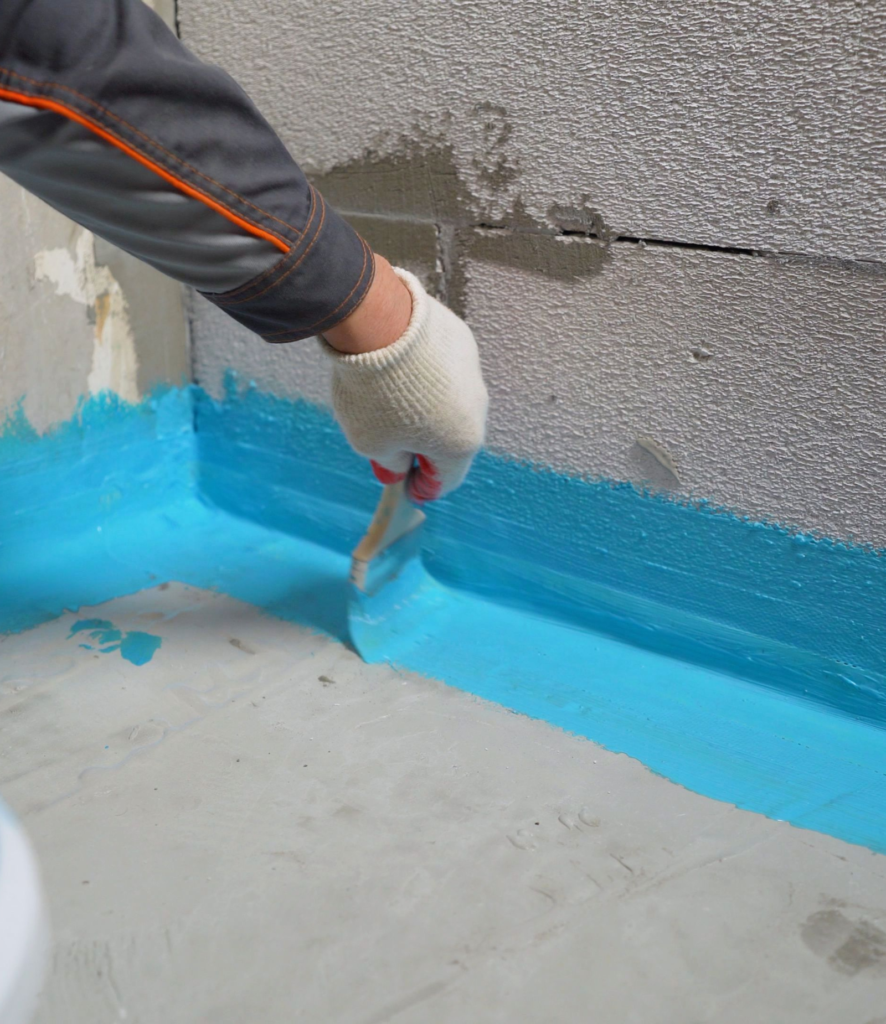Below Ground Waterproofing
Causes of Below Ground Leakage
-
Poor Construction Practices
Below ground leakage is usually due to improper sealing of joints, inadequate compaction of soils and use of insufficient waterproofing materials during construction. -
Use of Low-Quality Material in Construction
Sometimes, manufacturers use low-quality materials in building basements and houses. These poorly constructed buildings can leak below ground such as basements. -
Poor Installation
Poor installation of underground pipes due to less experience results in weak connections of joints, which can cause leakage. -
Aging of Material
Older pipes and older construction materials can weaken as time passes, eventually leading to leakage. -
Cracked Foundation
A cracked foundation can contribute to leakage. Water can seep through the cracks of the foundation. This usually happens when the water table is high during rainy days. This water can cause an increase in hydrostatic pressure which leads to leakage. -
Chemical Corrosion
Water which is infiltering through cracks in a foundation can contain chemicals which can corrode pipes with the passage of time causing leakage.
Get Professional Waterproofing Today
Fill The Form below to take free site evaluation by Chemcons service expert.
How Below Ground Leakage Can be Treated?
Methods We Use to Below Ground Waterproofing

Backfilling
Next to the below ground wall, backfilling is done with at least sixteen inches of granular material, which will keep water at a distance from the wall. In this way, the water can drain freely to the footing drains. The backfill is usually kept at a slope of about ten feet away from the foundation to keep removing water away from the basement.

Footing Drains
Gutters and grading can act as a defense against leaking below ground. To keep the below ground walls dry . But the below ground waterproofing also requires footing drains to keep below ground walls dry. Chemcons footing drain services include perforated drain piping below ground, which is used to direct water away from the footings. New construction below ground waterproofing of chemcons must include these pipes.

Preventing capillary action while waterproofing below ground
Despite good drainage water management the below ground soil can contain a considerable amount of water vapor. These can enter into the building through capillary action. So, Chemcons have suitable solutions to this problem as well. Chemcons applies the methods of waterproofing below ground.
- Damp proofing : In damp proofing, a coating is sprayed and rolled on the outside of the wall. The addition of this damp proofing to concrete can make the concrete water resistant.
- Vapour Barrier : We installed a vapor barrier on the surface of the foundation, which stops the passing of water vapors from the soil to the building.
- Capillary break : We install capillary breaks in the foundation, which help to stop the capillary transfer of water from the ground to the foundation. We create capillary breaks with the help of waterproof membrane material.

Why Choose Chemcons
- Our new construction below ground waterproofing methods protect your foundation from water and water vapors in harsh conditions.
- Our products consist of sheet and fluid products and drainage systems, which provide the best protection for your building.
- To avoid leakages and poor drainage systems, which can cost you expensive repairs. You should choose Chemcons for your new construction below-ground waterproofing.
- Our professionals will design your below ground waterproofing new construction which will avoid any leakages in future.
